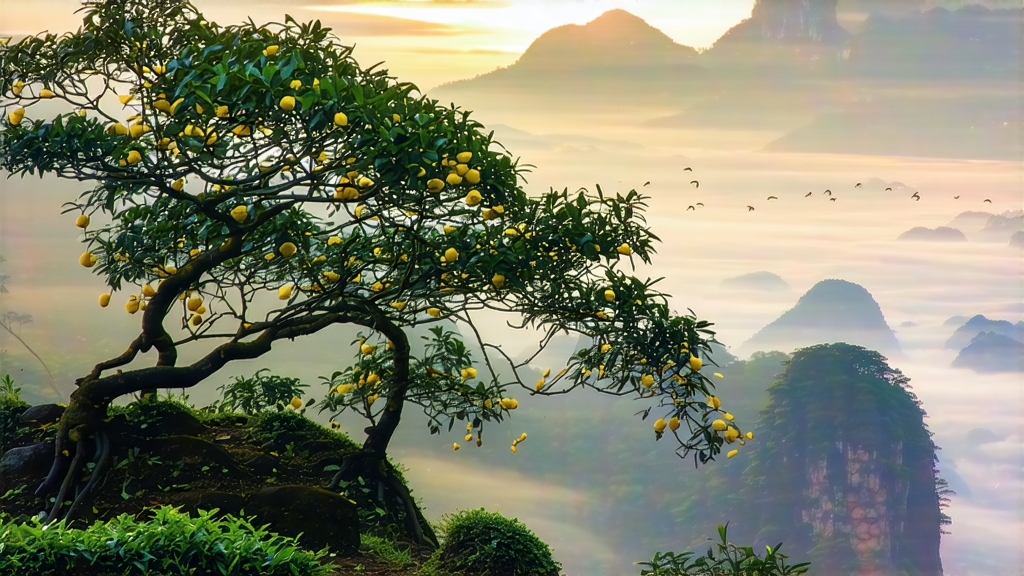
Tucked away in the cloud-veiled peaks of Sichuan’s Ya’an region, Mengding Huangya has been whispering its mellow, chestnut-sweet secrets for more than twelve centuries. Foreign drinkers often greet yellow tea with blank stares—most catalogs jump from green to oolong—yet this “forgotten” category once traveled the same courier roads as silk and spices to satisfy the most discriminating palates of Tang, Song and Ming emperors. Of the handful of authentic yellow teas still produced, none carries more historical weight or aromatic nuance than the tiny spring buds picked on Mengding Mountain, the very summit where legend claims Wu Li-zhen, the “Father of Sichuan Tea,” planted seven immortal bushes in 53 BCE. Today, walking those same granite steps, you can still see the stone inscription he allegedly carved: “First tea under heaven.” The claim is poetic, but every sip of Mengding Huangya suggests it may also be true.
What makes a tea “yellow”? It is not leaf color alone; rather, it is an extra, whisper-quiet step inserted after green-tea fixation and before final drying. Chinese texts call it men huang—“sealed yellowing.” Enzymes still alive in the leaf are allowed to exhale under a gentle blanket of humidity and warmth, oxidizing just enough chlorophyll to turn the leaf a muted jade-to-amber while converting bitter catechins into softer theaflavins and aromatic esters. The result is a liquor that glows like late-afternoon sunlight and tastes somewhere between the grassy snap of green tea and the honeyed depth of a light oolong, yet belongs to neither camp.
Mengding Huangya is harvested only ten mornings each year, when the mountain’s thermometer hovers between 14 °C and 18 °C and the buds still wear their winter down. Pickers—usually young women whose fingers are said to be “warm enough not to bruise, cool enough not to cook”—pluck the standard “one bud with one unopened leaf,” a pairing no longer than 2.5 cm. The buds must be ivory at the base, jade green at the tip, and covered in a silvery pubescence that locals call “morning frost.” A skilled picker gathers barely 500 g in a dawn shift; 50 000 such buds shrink to 100 g after firing.
The craft begins within minutes of plucking. First, the leaves are spread on bamboo trays and tumbled in a 100 °C drum for 90 seconds—just long enough to kill the green enzymes without fixing the shape. This “fast fixation” preserves the buds’ natural curve, a crescent that poets compare to a sparrow’s tongue. Next comes the unique men huang: the hot leaves are piled 3 cm deep inside square cedar boxes lined with wet linen. The boxes are slid into a dim 32 °C chamber for 48 hours, during which the tea master checks every two hours, sniffing for the moment when grassy notes give way to steamed corn and toasted buckwheat. If the pile overheats by even 2 °C, the buds will sour; if it cools, the yellowing stalls and the tea reverts to green. When the aroma peaks, the leaves are transferred to a charcoal basket set over a low ember of local oak. Here, in 3-minute cycles, the tea is rocked, tossed and fanned until moisture drops to 7 %. A final rest of seven days allows residual humidity to migrate from stem to leaf, after which a last gentle bake locks in the signature chestnut-sweet finish.
Because the leaf is so tender, western-style teapots can scald it. The classic Sichuan method uses a tall, thin-walled glass called a gai-bei—essentially a lidded drinking glass—so the drinker can watch buds stand upright, then slowly sink in a choreography known as “the three ups and three downs.” For 3 g of tea, first rinse the glass with 85 °C water to prime the glass; then refill to a finger’s width below the rim. After 45 seconds, slide the lid just enough to decant the liquor, leaving the buds untouched. Subsequent infusions add 15 seconds each; four steeps reveal a progression from orchid to almond milk to sweet hay. If you must use a pot, choose porcelain, pre-warm with cooler water, and keep the leaf above the men